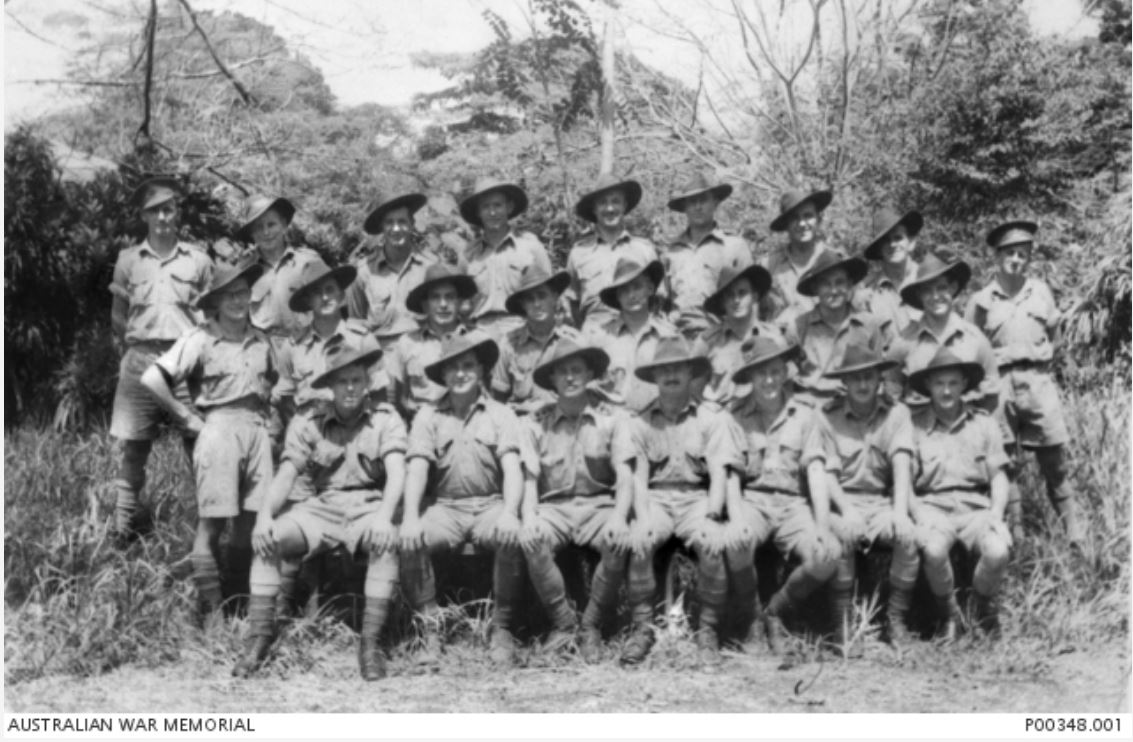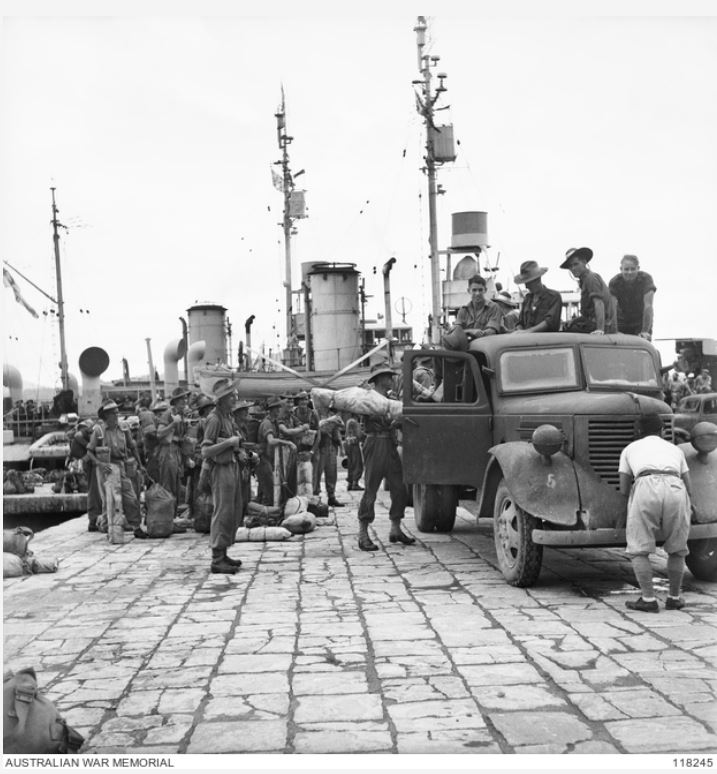Difference between revisions of "10th Australian Field Ambulance"
From Our Contribution
| (One intermediate revision by the same user not shown) | |||
| Line 8: | Line 8: | ||
| image = [[File:10th_Field_Ambulance_1.jpg]] | | image = [[File:10th_Field_Ambulance_1.jpg]] | ||
| caption = Rabaul, New Guinea detachment some of whom were captured either excecuted or lost when the Montevideo Maru was sunk by a US Submarine | | caption = Rabaul, New Guinea detachment some of whom were captured either excecuted or lost when the Montevideo Maru was sunk by a US Submarine | ||
| − | | image2 = [[File: | + | | image2 = [[File:10th_Field_Ambulance_2.jpg]] |
| caption2 = 22 Sep 1945 Ambon Island | | caption2 = 22 Sep 1945 Ambon Island | ||
| Line 37: | Line 37: | ||
==General Information== | ==General Information== | ||
| − | ''10th Australian Field Amulance'' was in Seymour camp when the army was mobilised in December 1941 before moving to Bonegilla in March 1942. In May they moved with the ''3rd Infantry Division'' to Queensland before moving to Papua New Guinea in December 1942 to provide detachments supporting Australian and US troops fighting in the Buna and later the Sanananda regions. In | + | The ''10th Australian Field Amulance'' was in Seymour camp when the army was mobilised in December 1941 before moving to Bonegilla in March 1942. In May they moved with the ''3rd Infantry Division'' to Queensland before moving to Papua New Guinea in December 1942 to provide detachments supporting Australian and US troops fighting in the Buna and later the Sanananda regions. In January 1943 they moved to Oro Bay to service the Base units there. |
| − | By June 1943 they had Advanced Dressing Stations at Dobodura and Morobe along with several air evacuation points. As the battle moved towards Salamaua they had detachments at Nassau and Tambu Bay, and following the capture of Lae, they moved there in October, with detachments at Nadzab, Morobe and Finschhafen. By January 1944 the unit had moved to Finschhafen with outposts on the evacuation routes for troops advancing along the Rai Coast. | + | By June 1943 they had Advanced Dressing Stations at Dobodura and Morobe along with several air evacuation points. As the battle moved towards Salamaua they had detachments at Nassau and Tambu Bay, and following the capture of Lae, they moved there in October 1943, with detachments at Nadzab, Morobe and Finschhafen. By January 1944 the unit had moved to Finschhafen with outposts on the evacuation routes for troops advancing along the Rai Coast. |
| − | In May 1944 they left New Guinea for Strathpine in Queensland where they prepared for | + | In May 1944 they left New Guinea for Strathpine in Queensland where they prepared for their role in the recapture of Borneo. In June 1945 they moved to Morotai before landing in Balikpapen during July to support the ''7th Australian Infantry Division''. Following the Japanese surrender they returned to Morotai and then to Ambon with the ''33rd Australian Infantry Brigade'' to supervise the surrender and the recovery and repatriation of POWs. |
Latest revision as of 20:25, 16 July 2024
General Information
The 10th Australian Field Amulance was in Seymour camp when the army was mobilised in December 1941 before moving to Bonegilla in March 1942. In May they moved with the 3rd Infantry Division to Queensland before moving to Papua New Guinea in December 1942 to provide detachments supporting Australian and US troops fighting in the Buna and later the Sanananda regions. In January 1943 they moved to Oro Bay to service the Base units there.
By June 1943 they had Advanced Dressing Stations at Dobodura and Morobe along with several air evacuation points. As the battle moved towards Salamaua they had detachments at Nassau and Tambu Bay, and following the capture of Lae, they moved there in October 1943, with detachments at Nadzab, Morobe and Finschhafen. By January 1944 the unit had moved to Finschhafen with outposts on the evacuation routes for troops advancing along the Rai Coast.
In May 1944 they left New Guinea for Strathpine in Queensland where they prepared for their role in the recapture of Borneo. In June 1945 they moved to Morotai before landing in Balikpapen during July to support the 7th Australian Infantry Division. Following the Japanese surrender they returned to Morotai and then to Ambon with the 33rd Australian Infantry Brigade to supervise the surrender and the recovery and repatriation of POWs.
Staff
Patients
- Forrest John Spencer Robertson 13 - 19 Mar 1943 & 26 - 29 Jun 1943

